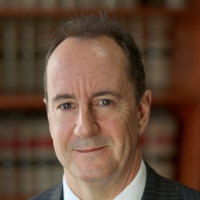Half a million needed to make super funds work
Some accountants and financial planners, seeking to capitalise on the growing self-managed super funds (SMSF) market, are providing dubious advice to investors with the consequence being that this counsel is costing these investors thousands in such funds. The unfortunate reality is that investors are being coerced into creating SMSF with as little as $250,000 to invest.

Blogger: Rolf Howard, CEO, Owen Hodge Lawyers
Investors need a minimum of $500,000 either in their super fund or available through equity in shares or property to make the creation of a SMSF worthwhile. Significantly more than 500,000 SMSF’s are now operating in Australia according to the Australian Taxation Office.
In recent months conversations with a number of people have revealed that they have been advised to set up a SMSF by financial practitioners. These people say they do not fully understand the ramifications behind such a move. That in itself makes them unsuitable to take on the responsibility of managing their own SMSF. Setting up a SMSF is not to be taken lightly as there are significant associated risks as indeed is the case with any investment vehicle.
For the informed investor there are benefits associated with setting up a SMSF. These include the capacity to determine one’s own future instead of being subjected to the whim of a large public fund. Large super funds in Australia, whilst relatively safe, have high administrative costs and fairly ordinary investment returns. Further the SMSF can be used to facilitate a tax effective transition into retirement and can also be cost effective if run correctly thereby enabling investors to choose investment processes and products that suit their individual circumstances. Additional benefits include allowing people to reduce the costs associated with running a SMSF if they do it themselves and also allowing them to opt for a mix of investments that may include both equities and property. Importantly property debt can be leveraged against the fund to further decrease costs.
Operating a SMSF can become very expensive if it is not run correctly. In my experience if you do not have a minimum of $500,000 to invest it is very difficult to justify both the fund’s set up and ongoing maintenance costs. Some practitioners who offer financial advice don’t tell investors this as their focus is on seeking ways to increase their revenue streams to the financial detriment of their clients. Many are touting a minimum of $250,000 is all that is needed. This figure is well short of the financial benchmark in my opinion.
It is very important to have an investment plan prior to embarking on establishing a SMSF. Discussion regarding the various investment options with an accountant is also imperative. Further a significant level of discipline is also required to effectively run a fund. Experience has demonstrated that many struggle to separate the fund’s activities from other investment expenses including personal and business.
Three tips are offered to help fool-proof self-managed super funds. These include:
1) Ensure there is adequate money to invest in the fund to cover all running costs. As a general guide $500,000 should be a starting point over and above the family home.
2) Discipline is paramount. The trustee of the fund needs to adopt strict investment principles to ensure the fund returns a solid profit. The SMSF must be conducted in accordance with the governing legislation for the benefit of the members and for no other purpose.
3) Have an investment plan. Seek the advice of a good accountant and organise how the SMSF will be administered and write down the investment plan. Ensure your nest egg is spread across a number of different baskets.